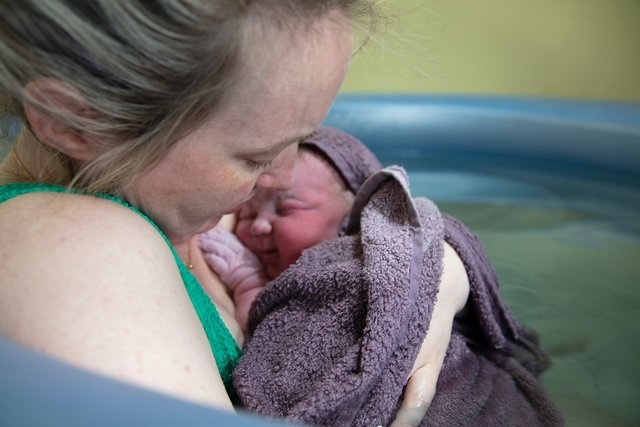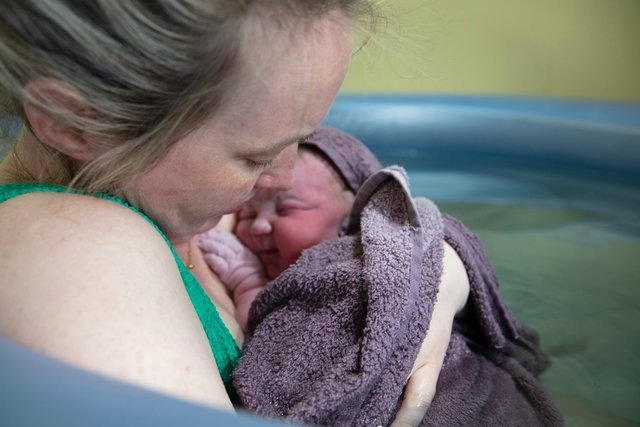A home birth is one that takes place at home, generally chosen by women who are looking for a more welcoming and intimate environment to have their baby. However, it is essential that this type of birth is carried out with excellent prenatal planning and with the monitoring of a specialized health team, to guarantee the health care of the mother and baby and constant monitoring of temperature, pulse, blood pressure and fetal heartbeat.
Furthermore, it is important to highlight that home birth is not recommended for all women, as there are situations that contraindicate it, such as women who are diabetic, have high blood pressure or are pregnant with twins, as they present a higher risk of complications during birth.
Although home birth brings convenience and comfort to the pregnant woman, labor and the birth of the baby can be unpredictable, in addition to the home being considered a place less prepared to offer care, in case there is any type of complication. For this reason, the main medical entities are not in favor of home birth, recommending that birth take place in a hospital environment for greater safety of mother and baby.

Let’s clarify some of the main doubts about this topic:
1. Can any pregnant woman give birth at home?
No. Home birth can only be done by healthy pregnant women, who have had complete prenatal care and who have gone into labor naturally. As a way to protect the health of the baby and the woman, home birth is not recommended if the pregnant woman presents the following situations:
- High blood pressure, pre-eclampsia or gestational diabetes or any other condition that causes a high-risk pregnancy, due to diseases such as heart disease, lung disease, kidney, hematological or neurological diseases;
- Having had a previous cesarean section or other types of surgery on the uterus;
- Pregnancy with twins;
- Baby in sitting position;
- Any type of infection or sexually transmitted disease;
- Suspected malformation or congenital disease in the baby;
- Anatomical changes in the pelvis, such as narrowing.
These situations increase the risk of complications during childbirth, making it unsafe for this to take place outside the hospital environment.
2. How is the team that delivers the baby made up?
The team that provides home birth care must be made up of nurses specializing in maternal and obstetric health and/or an obstetrician. It is also possible to have a doula to provide physical and emotional support. Some women choose to give birth only with obstetric nurses, however, it must be understood that, if there are any complications during the birth, there will be a longer delay in receiving the first medical care, and time is crucial during an emergency.
3. How much does a home birth cost? Is there free?
Home birth is not covered by the SUS, so women who wish to do so need to hire a team specialized in this type of birth.
To hire a home birth team, the cost can be, on average, between 15 and 20 thousand reais, which varies according to the location and the amount charged by the professionals involved.
4. Is it safe to give birth at home?
It is true that, most of the time, natural birth happens naturally and without any type of intervention. However, it is important to remember that any birth, even in healthy women, can involve some type of complication, such as difficulties in uterine contraction and dilation, a true knot in the umbilical cord, changes in the placenta, fetal distress, uterine rupture or uterine hemorrhage.
Therefore, being at home during the birth, if there are any of these complications, will delay the initiation of care that could save the life of the mother or baby, or prevent the baby from being born with sequelae, such as cerebral palsy.
5. How does home birth happen?
A home birth is similar to a normal hospital birth, however, the mother will be in her bed or in a special bathtub, so that she feels comfortable. Labor usually lasts between 8 and 12 hours, and during this period the pregnant woman should eat light foods, such as whole foods, fruits and cooked vegetables.
During the procedure, there must be clean material, such as disposable sheets or trash bags, as well as a clean and warm environment to receive the baby.
6. Is it possible to receive anesthesia?
Anesthesia is not used during home births, as this is a type of procedure that must be carried out in a hospital environment.
7. What is done if there are any complications during birth?
It is important that the health team responsible for the home birth has materials available to be used in case of any type of complication, such as bleeding or delay in the baby’s delivery. Therefore, there must be sutures, local anesthetic, forceps or resuscitation material for the baby, if necessary.
However, if there is a more serious incident, such as hemorrhage or fetal distress, the pregnant woman and the baby must be transferred immediately to the hospital.
8. Is it possible to have a humanized birth other than at home?
Yes. Nowadays, many hospitals have humanized birth programs, in a very welcoming environment for the mother and baby, with a team specialized in this type of birth.

Sign up for our newsletter and stay up to date with exclusive news
that can transform your routine!
Warning: Undefined array key "title" in /home/storelat/public_html/wp-content/plugins/link-whisper-premium/templates/frontend/related-posts.php on line 12
Warning: Undefined array key "title_tag" in /home/storelat/public_html/wp-content/plugins/link-whisper-premium/templates/frontend/related-posts.php on line 13




